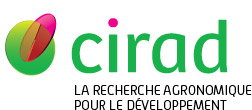Penel Benoit, Meynard Christine N., Benoit Laure, Boudonne Axel, Clamens Anne-Laure, Soldati Laurent, Migeon Alain, Chapuis Marie-Pierre, Piry Sylvain, Kergoat Gael J., Haran Julien. 2025. The best of two worlds: Toward large-cale monitoring of biodiversity combining COI metabarcoding and optimized parataxonomic validation. Ecography, 6:e07699, 13 p.
|
Version Online first
- Anglais
Sous licence  . .
69. Penel et al. 2025 metabarcoding parataxonomic validation.pdf Télécharger (1MB) | Prévisualisation |
|
|
Version publiée
- Anglais
Sous licence  . .
611951.pdf Télécharger (1MB) | Prévisualisation |
Url - jeu de données - Entrepôt autre : https://zenodo.org/records/13760159
Résumé : In a context of unprecedented insect decline, it is critical to have reliable monitoring tools to measure species diversity and their dynamic at large-scales. High-throughput DNA-based identification methods, and particularly metabarcoding, were proposed as an effective way to reach this aim. However, these identification methods are subject to multiple technical limitations, resulting in unavoidable false-positive and false-negative species detection. Moreover, metabarcoding does not allow a reliable estimation of species abundance in a given sample, which is key to document and detect population declines or range shifts at large scales. To overcome these obstacles, we propose here a human-assisted molecular identification (HAMI) approach, a framework based on a combination of metabarcoding and image-based parataxonomic validation of outputs and recording of abundance. We assessed the advantages of using HAMI over the exclusive use of a metabarcoding approach by examining 492 mixed beetle samples from a biodiversity monitoring initiative conducted throughout France. On average, 23% of the species are missed when relying exclusively on metabarcoding, this percent being consistently higher in species-rich samples. Importantly, on average, 20% of the species identified by molecular-only approaches correspond to false positives linked to cross-sample contaminations or mis-identified barcode sequences in databases. The combination of molecular methodologies and parataxonomic validation in HAMI significantly reduces the intrinsic biases of metabarcoding and recovers reliable abundance data. This approach also enables users to engage in a virtuous circle of database improvement through the identification of specimens associated with missing or incorrectly assigned barcodes. As such, HAMI fills an important gap in the toolbox available for fast and reliable biodiversity monitoring at large scales.
Mots-clés Agrovoc : biodiversité, identification, taxonomie, Elaeidobius
Mots-clés libres : Biodiversity assessment, Coleoptera, Molecular operational taxonomic units, Morphological validation, Recognizable taxonomic units, Taxonomic impediment
Agences de financement hors UE : Agence Nationale de la Recherche
Projets sur financement : (FRA) Forces structurantes de la biodiversité dans les bordures de champs agricole : métacommunautés et interactions plantes-insectes dans un gradient d'intensification agricole
Auteurs et affiliations
- Penel Benoit, Université de Montpellier (FRA)
- Meynard Christine N., INRAE (FRA)
- Benoit Laure, CIRAD-BIOS-UMR CBGP (FRA)
- Boudonne Axel, INRAE (FRA)
- Clamens Anne-Laure, INRAE (FRA)
- Soldati Laurent, INRAE (FRA)
- Migeon Alain, INRAE (FRA)
- Chapuis Marie-Pierre, CIRAD-BIOS-UMR CBGP (FRA)
- Piry Sylvain, INRAE (FRA)
- Kergoat Gael J., INRAE (FRA)
- Haran Julien, CIRAD-BIOS-UMR CBGP (FRA) - auteur correspondant
Source : Cirad-Agritrop (https://agritrop.cirad.fr/611951/)
[ Page générée et mise en cache le 2025-10-02 ]




